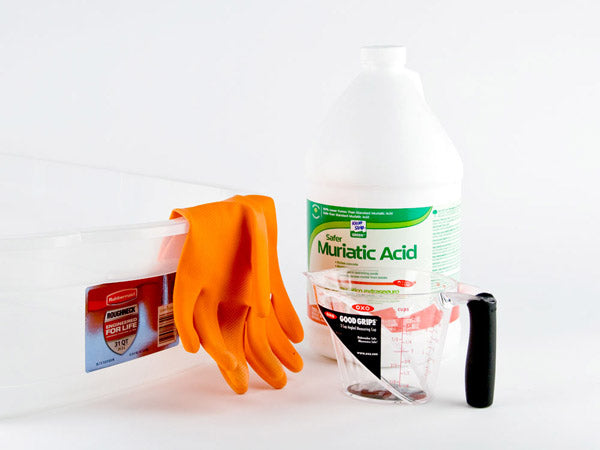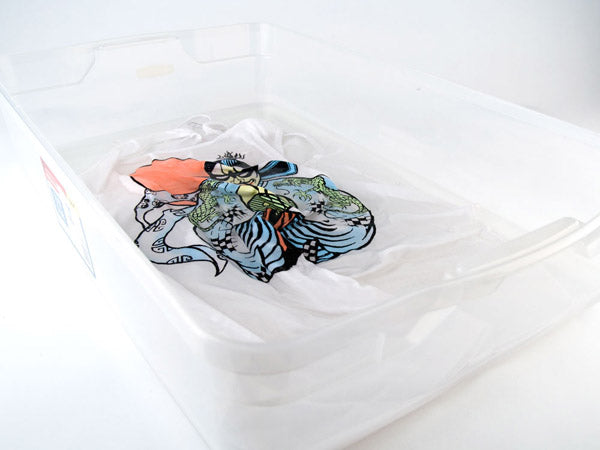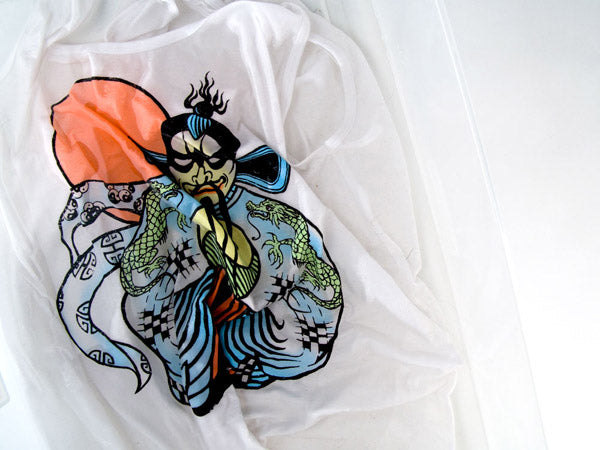Aging T-Shirts In Six Easy Steps: Muriatic Acid (Part 4)

All you need is glove.
Materials: Muriatic Acid, Clear Plastic Tub, Measuring Cup(s), Latex Gloves, Safety Google.
Method: 1. Mix 3 gallons warm water with 2 cups of Muriatic acid (a 24-1 ratio).
2. Soak shirt for one hour.
3. Pull, rinse, and wash.
Revised Method: 1. Mix 14 cups of warm water with 7 cups of Muriatic acid (a 2-1 ratio).
2. Soak shirt for 60 hours.
3. Pull, rinse, and wash.
Results & Conclusions: Muriatic acid is, according to Wikipedia, “a solution of hydrogen chloride (HCl) in water, that is a highly corrosive, strong mineral acid with many industrial uses.” Among other things, it’s typically used to process leathers, pickle steel, and disinfect pools. You would think, as a result, that it might eat through a cotton tee shirt, but you’d be wrong, as you can see in the picture below which reveals absolutely no change to the Elsinore design, be it the blank or the actual design.

From left to right: treated, untreated. No change detected, either visually or via touch at the 60-minute mark.
Said failure led us to revise the methodology for added potency and a longer duration. Again, however, there were no positive results to report, which leads us to the following conclusion: it doesn’t work. Which should be no surprise: according to these helpful Cotton Factoids, its fibers “are not affected by cold weak acids… [and] there are few solvents that will dissolve [them] completely.”
The Jack Burton design, a 5 color print, soaking at the 1-hour mark hour:
No degradation.
Soaking at the 60-hour mark:
Again, no degradation.
Related reading.
Next: Salt & Washing Soda!


